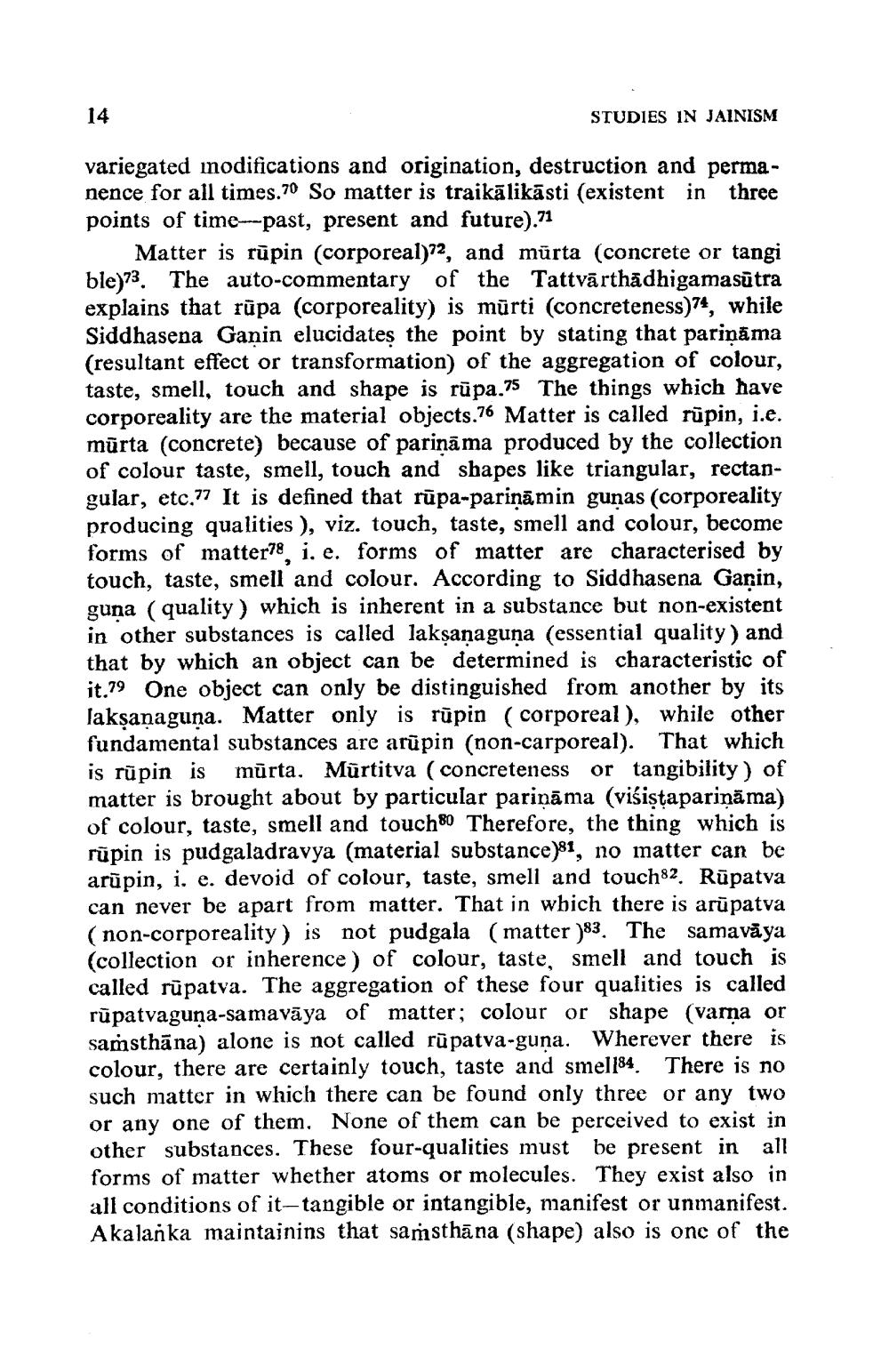________________
14
STUDIES IN JAINISM
variegated inodifications and origination, destruction and permanence for all times.70 So matter is traikā likāsti (existent in three points of time--past, present and future).71
Matter is rūpin (corporeal)72, and mūrta (concrete or tangi ble)73. The auto-commentary of the Tattvārthādhigamasutra explains that rūpa (corporeality) is mūrti (concreteness)74, while Siddhasena Ganin elucidates the point by stating that pariņāma (resultant effect or transformation) of the aggregation of colour, taste, smell, touch and shape is rūpa.75 The things which have corporeality are the material objects.76 Matter is called rūpin, i.e. mūrta (concrete) because of parināma produced by the collection of colour taste, smell, touch and shapes like triangular, rectangular, etc.77 It is defined that rūpa-pariņāmin gunas (corporeality producing qualities ), viz. touch, taste, smell and colour, become forms of matter78, i. e. forms of matter are characterised by touch, taste, smell and colour. According to Siddhasena Garin, guna ( quality ) which is inherent in a substance but non-existent in other substances is called laksanaguna (essential quality) and that by which an object can be determined is characteristic of it.79 One object can only be distinguished from another by its lakṣaṇaguna. Matter only is rūpin (corporeal), while other fundamental substances are arūpin (non-carporeal). That which is rūpin is mūrta. Mürtitva (concreteness or tangibility) of matter is brought about by particular parināma (višistapariņāma) of colour, taste, smell and touch80 Therefore, the thing which is rūpin is pudgaladravya (material substance)81, no matter can be arūpin, i. e. devoid of colour, taste, smell and touch82. Rūpatva can never be apart from matter. That in which there is arūpatva (non-corporeality) is not pudgala (matter )83. The samavāya (collection or inherence of colour, taste smell and touch is called rūpatva. The aggregation of these four qualities is called rūpatvaguna-samavāya of matter; colour or shape (vama or samsthāna) alone is not called rüpatva-guna. Wherever there is colour, there are certainly touch, taste and smel184. There is no such matter in which there can be found only three or any two or any one of them. None of them can be perceived to exist in other substances. These four-qualities must be present in all forms of matter whether atoms or molecules. They exist also in all conditions of it-tangible or intangible, manifest or unmanifest. Akalanka maintainins that samsthāna (shape) also is one of the




